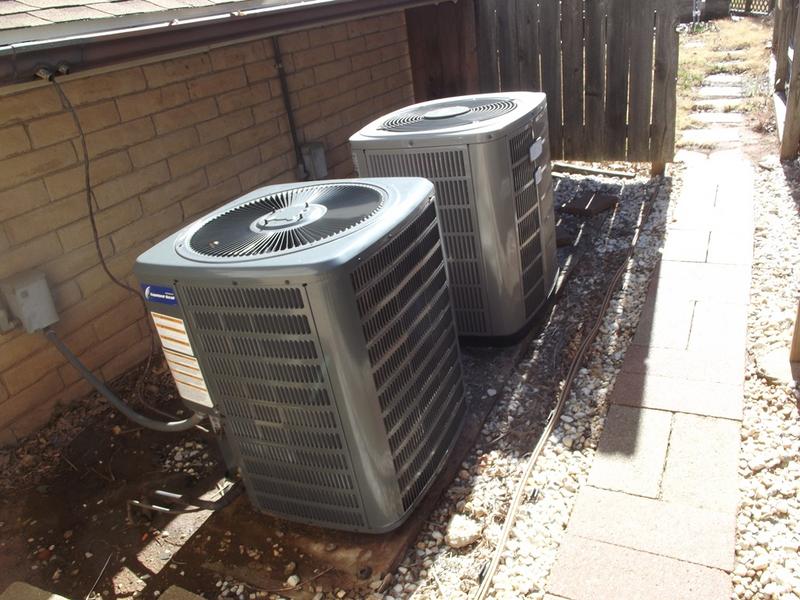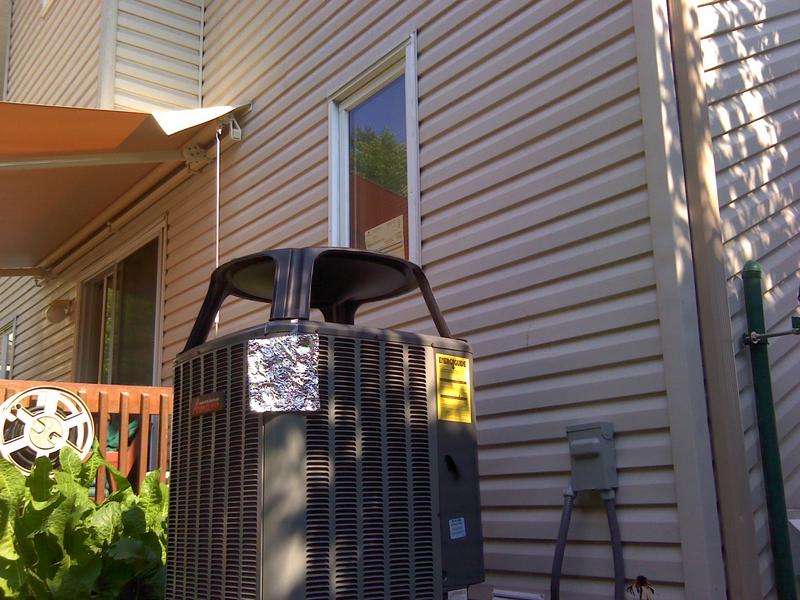Ok you south Texas and fla heat pump experts what is wrong in this pic both units are newer heat pumps 06 and 08
I’m from the C country and would say units are too close to ground and should have covers but those refrigerant lines…
What kind of covers are you talking about ??? close to the ground is not a primary concern in Okla not what I am looking for and what concern would you have with refrigerant lines
Is the wiring from the air handler coming out the condensate line?
From my phone it looks like they are coming out of the ground.:shock:
A cover to prevent snow and ice damage to the blades.
The refrigerant line should be insulated and they appear to be going in the ground, hard to tell from the pic.
Wow we in OKla don’t have that kind of snow and ice the top has to be clear for fan discharge in the winter opertion.
What I was looking for was the non insulated suction line heat loss and the buried suction line thermal loss to the soil a heat pump refrigerant line should never be buried:D I am sure glad I don’t live in your cold climate I can not handle cold anymore guess* I am a Woosie:D but I can climb roofs*
Charley, I call out lack of insulation at the exterior as a heat loss issue and in the attic as a heat loss issue and source of moisture damage due to condensation. Does the not burying the refrigerant line apply to AC systems as well?
Also, what was coming out of that condensate line?
There was no condensate line present at the unit big thermostat wire used about a nine conductor.
Your are pretty sharp I was waiting for that question about buried lines for the A/C on a standard A/C unit. Yes in my opinion if the line is buried it will loose its temp to the warm soil refrigerant temp returning at 40 some degrees and summer time soil temp above 70 will warm the refrigerant temp. The windings in the compressor motor are depdent on the refrigerant temp for cooling affect can shorten the overall life of the compressor over time. I have said it before Troy you will do good in ths business you are always thinking
I love the positve posts from Charley and others .
Sad we have few who have good knowledge but seem to think they need to attack so often .
Too late! Good post Charley.
Troy I went back and looked at my own pic and now see what you were talking about it was not a condensate line but an old refrigerant line from the first unit and it was being used as conduit for the wiring from the AHU to the condensing unit. Does look kinda strange if you were not on site and actually see it up close
Incidently, did anyone notice anything which could be improved in my pic of an heat pump posted previously?
Yeah show me a straight digital PIC:p:D
I have never seen a snow guard on one before and I was wondering what in the world that square patch on the side was I was thinking ice but I was thinking that was not right because of the temp of the snow shield was the unit running or was the temp on the sheild from the sun
The foil patch was to get the reflected apparent temperature.
The unit was running in cooling mode. It was past sunset.
Hey Charlie,
Not to get in your client flakes, but what kind of heat loss are you looking at for that little bit of suction refrigerant line located in the soil?
If that air handler is located in the attic, in Oklahoma, it ain’t worth mentioning!
The reason I post this is because I want people the focus on the fact that insulating the suction refrigerant line is more about preventing condensation than an efficiency loss. To be perfectly honest with you, I don’t think I could come up with an algorithm to determine the BTU loss of burying a refrigerant line in the soil 30 inches or less.
In all actuality, induced draft convection across the refrigerant line from the condenser fan motor probably cause is a greater loss on the internal components of the condensing unit than 50 feet of buried refrigerant line!
Just saying!
I would be more concerned about the two units competing for the same air between each other, or discharging air being drawn back into condensing unit coils because are located so close to one another.
They say 2 feet. Refrigeration pressures tell the story.
Keep up with the thought invoking process though!
David this was on a split level home with a walkout the bare lines being buried in soil for a heat pump with a ground temp at that level, entry into the wall in the winter time here is around twenty some degrees frost line is 18 to 24 inches so yes I have a concern about temp efficiency when the temp of the suction line in the heat mode is above 100 degrees and it will have a substantial loss before it arrives at the A-coil. Not much difference than emerging the line in a bucket of water and watch the temp drop. I agree its not so critical in the cooling mode BuTTTTT its not best practice
You are talking cooling mode and I am talking heat mode, both ahu’s were located in a first level equipment room not a attic
Marcel, what camera are you using?
I would adjust the the image so not so much is maxed out. What did you focus on ie the unit or home?
I also would not attach my aluminum to the object I am imaging.


